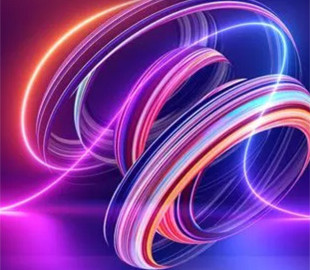
The future of cellular data may lie in «bending light beams in the air to deliver incredibly fast 6G wireless networks — avoiding the need for direct line of sight between transmitter and receiver. In a new study published March 30 in the journal Nature’s Communications Engineering, researchers explain how they developed a transmitter that can dynamically adjust the waves needed to support future 6G signals.
The most advanced cellular communication standard is 5G. 6G is expected to be thousands of times faster and will start rolling out in 2030, according to trade organization GSMA. Unlike 5G, which mostly operates in the sub-6 gigahertz (GHz) bands of the electromagnetic spectrum , 6G is expected to operate in the sub-terahertz (THz) range between 100 GHz and 300 GHz, and the THz bands — just below infrared. The closer this radiation is to visible light, the stronger the signals are blocked by physical objects. The main problem with high-frequency 5G and the future 6G is that the signals need a line of sight between the transmitter and the receiver.
But in experiments, scientists have shown that you can effectively "distort" high frequency signals around obstacles such as buildings.
"This is the world's first curved data transmission channel, an important milestone in realizing the 6G vision of high data transmission speed and high reliability", — said Edward Knightley, co-author of the study and professor of electrical and computer engineering at Rice University.
Photons or light particles forming THz radiation in this region of the electromagnetic spectrum usually move in straight lines, if space and time are not distorted by massive gravitational forces — those that act black holes. But the researchers found that self-accelerating beams of light — first demonstrated in a 2007 study — form special configurations of electromagnetic waves that can bend or warp to one side while moving through space.
By designing transmitters with patterns that manipulate the strength, intensity, and timing of the data-carrying signals, the researchers created waves that worked together to create a signal that remained intact even if its path to the receiver was partially blocked. They discovered that it is possible to form a beam of light that adapts to any objects in its path by shuffling the data in an unblocked pattern. So while the photons are still traveling in a straight line, the THz signal actually bends around the object.
Getting closer to the 6G future
Although the bending of light without the power of a black hole is not new research, what is important about this research is that it can make 6G networks a practical reality.
Millimeter wave (mmWave) 5G currently offers the fastest network bandwidth, occupying the higher 5G radio frequencies of 24 GHz to 100 GHz of the electromagnetic spectrum to deliver theoretical maximum download speeds of 10 to 50 gigabits (billion bits) per second. THz beams are above mmWave at 100 GHz to 10,000 GHz (10 THz), which is necessary to deliver data rates of one terabit per second, nearly 5,000 times faster than the average 5G speed in the US.
"We want more data per second",— said Daniel Mittleman, a professor in the Brown School of Engineering . "If you want to do that, you need more bandwidth, and that bandwidth just isn't there using conventional frequency bands".
But because of the high frequencies at which they operate, 5G mmWave and future 6G signals require a line of sight between transmitter and receiver. But thanks to practical signal delivery along a warped path, future 6G networks will not need buildings covered in receivers and transmitters.
However, the receiver must be within the near-field of the transmitter for signal warping to work. When using high-frequency THz beams, this means about 33 feet (10 meters) apart, which is not suitable for city-wide 6G, but may be practical for next-generation Wi-Fi networks.
"One of the key questions , which everyone asks us, is how much you can bend and how far», — said Mittleman. "We've made a rough estimate of these things, but we haven't quantified them yet, so we hope to map it out.
While THz signal distortion is promising for future 6G networks, the use of THz spectrum is still in its infancy. condition Thanks to this research, scientists said that we are one step closer to realizing cellular wireless networks with unprecedented speed.

